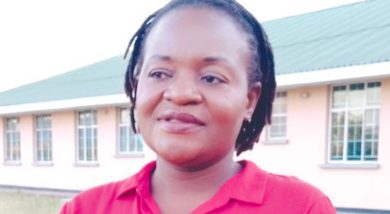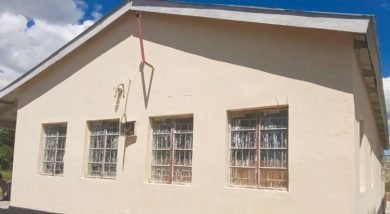Report damns free primary education

The jury is in and the verdict is damning. Malawi’s education system has failed the Free Primary Education (FPE) programme—miserably.
And with politicians flirting with a Free Secondary Education (FSE) programme even before cleaning up the primary school mess and equipping secondary school architecture, the bad news in the sector can only get worse.
FPE proponents said it would increase enrolment and expand education access.
Well, enrolment in Standard One did jump by one million from 1.8 million a year in 1994 to 2.8 million over the years.
That is a rise of over 55 percent, but the survival rate—which shows the extent to which the school system can retain pupils with or without repetition—has been worsening, especially in the past five years. This has almost rendered FPE ineffective.
For example, the survival rate up to Standard Eight stood at 52 percent in 2008, according to an Education Management Information System (EMIS) report (2013) carried out by the Ministry of Education’s Directorate of Education Planning.
That figure has gradually dropped 21 percentage points over the past five years to 31 percent in 2013, with the girl child being the most hit.
Also, while enrolment rose by one million at Standard One, only an average of 60 000 proceed to secondary school, according to the Ministry of Education report.
The reasons for the mediocre performance are numerous.
Educationists say FPE has failed to achieve its objectives due to lack of political will and poor planning, which have led to a myriad of challenges.
The challenges, they say, include inadequacies in infrastructure, well-trained teachers, teaching and learning materials; poor educational methods coupled with a weak grasp of the ever changing curriculum reforms, limited human capital at ministry level to effectively manage education programmes with still high vacancy rates, low absorption capacity and wobbling sectoral coordination.
Poor funding to the sector is also a paralyzing factor, the EMIS report says.
According to the report, which highlights Ministry of Education statistics between 1994 and 2013, the cost of educating a child in primary school has now risen to K9 186 per year while in secondary school the cost now stands at K39 160.
This means that for primary schools to achieve quality education there is need for a budget of about K41.3 billion annually, yet in the 2012/13 financial year, for example, the primary education sector got K32.5 billion from the national purse, leaving a yawn of nearly K10 billion.
The first Minister of Education to implement FPE, Sam Mpasu, said in an interview last week that the initiative failed to achieve objectives due to dwindling political will.
“I can say we started well, we increased the intake, we employed 22 000 teachers—4 000 recalled from retirement and 18 000 school leavers that were given on the job training—this was a great success, but the initiative did not get the political will it deserved from the leaders that followed,” he said.
Mpasu said 20 years on, the initiative has fallen short in all aspects, including equity, accessibility and quality of education.
“We started the project without a budget, but we had envisaged that 38 000 classrooms would be created. For managing purposes, government had agreed that each primary school in Malawi must have not more than 2 000 pupils and once the number exceeds a new school must be created.
“If only we had managed to build the 38 000 more classrooms, if only we could have managed to build a day secondary school in all 193 constituencies to accommodate those pupils that would be coming out of primary school!” he said.
For education activist Limbani Nsapato, poor planning, financing and mediocre management betrayed FPE.
In an e-mail interview last week, Nsapato said despite authorities boasting of achieving the objective of increasing enrolment, the project failed to ensure retention and quality.
“The estimated net enrolment rate of 91 percent shows that more children have access. However, the survival rate to standard eight is only 31 percent [27 percent for girls, 35 percent for boys], demonstrating that 70 percent of the children dropout. This means that more children are dropping out than those who survive the system, which defeats the whole purpose of increasing enrolment,” said Nsapato.
He added that while more than 30 percent fail Primary School Leaving Certificate of Education (PSLCE), Malawi pupils have been ranked poorly in three rounds of international studies assessing skills in reading and mathematics organised by Southern and Eastern Africa Consortium for Monitoring Education Quality (SACMEQ).
According to Nsapato, the SACMEQ assessment found that less than 30 percent of pupils in Malawi achieved minimum levels which, he said, signals that the quality of basic education is below the standards.
He observed that the main reason for low intake is inadequate infrastructure in form of classrooms to accommodate all pupils who succeed in Standard Eight.
Related to resources is shortage of qualified teachers to accommodate all the pupils who pass PSLCE, said Nsapato.
“The shortage of such resources could be attributed to inadequate funding for education. The other challenge is poor management of the sector and this is due to inadequate capacity at all levels. The third challenge is lack of parental or guardian support particularly in monitoring performance of their children and helping them with homework apart from encouraging them to ensure 100 percent school attendance,” he said.
Civil Society Education Coalition (CSEC) executive director Benedicto Kondowe, also in an e-mail response last week, said FPE had failed because its design was not futuristic and holistic enough as to envisage the demand that such a policy would create for secondary and tertiary education.
“The main reason is that we have not invested in expansion of secondary education to the effect that the number of schools has remained static. This has led to stagnation of matriculation rate from primary to secondary school to being 30 percent.
“Limited political will resonate with the fact that change of regimes continues to wean the support that such a policy agenda
On its part, the Ministry of Education admitted that the low transition rate from primary to secondary school is due to inadequate places in the upper schools.
In a written response to a questionnaire, Education Ministry spokesperson Rebecca Phwitiko said taking into account population growth, enrolment is increasing at around three percent annually and the projection is that by 2017 primary school enrolment will be at around 5.5 million.
Yet, she said, there are currently only about 80 000 available places in Form One.
To deal with the problem, Phwitiko said government—under the Education Sector Implementation Plan [ESIP] II—aims to have 320 000 additional secondary school places.
Phwitiko said the most significant way the ministry will increase access is to drastically expand double shifting—currently available in only five conventional secondary schools—to more schools nationwide.
“The expansion of double shifting will be done incrementally,” she explained.
Phwitiko said in 2015/16, double-shifting shall be expanded to all government day schools, opening up around 30 000 additional places.
By 2016/17, added Phwitiko, double-shifting will also be expanded to all government boarding and religious schools, which will open up around 27 000 government and 38 000 religious additional places.
“Because bedding capacity is limited, boarding schools will select pupils in their local constituency to be taught for morning classes while boarding pupils get taught in the afternoon,” she explained.
In 2017/18, double-shifting could be expanded to all large Community Day Secondary School s (CDSSs).





